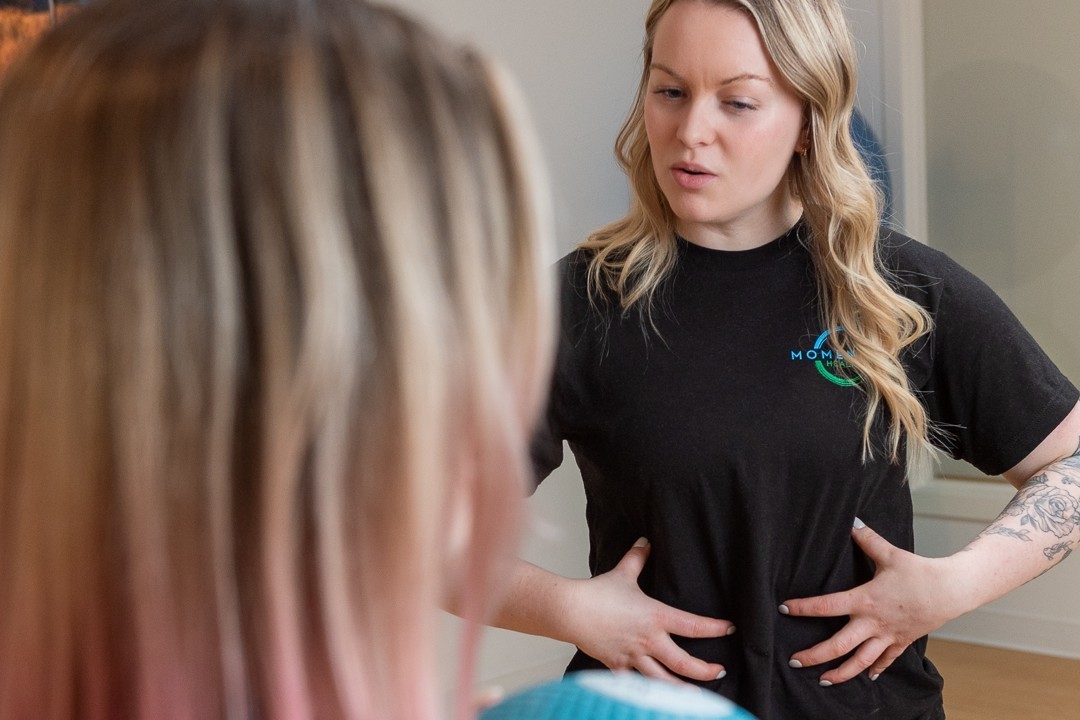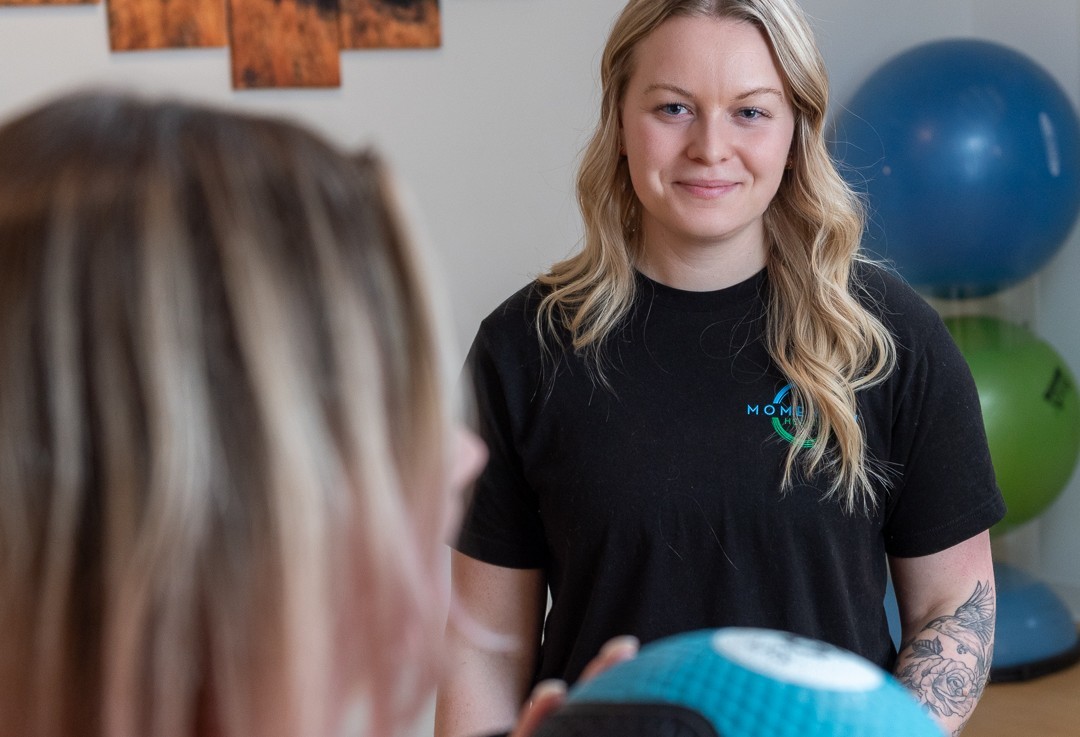
Diastasis Recti or “coning” of the abdominal muscles is very widely talked about within pregnancy and when training the functional core. Most often it is described as a gap or space between the abdominal muscles. If pronounced enough, it can sometimes be felt or even seen when at rest or contracting the core musculature. Although this term is widely used and is seen in many individuals, it is often a point of fear or unknown when returning to training postpartum or after abdominal injury.
During Pregnancy – Why does this happen?
When pregnant, the body undergoes many changes. One of the main changes is in the levels of the hormone Relaxin, a reproductive hormone produced by the ovaries and placenta. The increase in Relaxin in the body encourages ligaments and muscles to “relax” and become more flexible. This will help ensure that the uterus and surrounding muscles and ligaments can expand and grow throughout the pregnancy trimesters. Some studies suggest that this laxity of ligaments can play a role in the development of Diastasis Recti, as the linea alba (connective tissue that connects the abdominal muscles at the midline) is one of the structures that “relaxes” to accommodate growth. Although this is a normal bodily process and most often goes back to normal on its own post childbirth, many individuals still experience signs and symptoms long after the initial postpartum period.
During regular training – Should I be concerned?
Coning or Doming of the core muscles is a common occurrence during certain exercises but does not necessarily indicate presence of Diastasis Recti. A few reasons why we may see doming or coning include:
- Improper exercise form
- Lifting weights that are heavier than strength ability
- Performing an exercise above individual ability level
There are many other factors to consider before worrying about Diastasis Recti. Abdominal coning or doming can indicate we need to reevaluate how we are performing our exercises and/or include more targeted abdominal work throughout our exercise routines.
Returning to exercise post-pregnancy or post-injury - What do we do?
The best way to return to exercise after any period of cessation (for any cause or reason) is to start slow and increase gradually. It is important to remember that your body will need time to get back to where it was safely and effectively and to program workouts accordingly.
It is especially important when post-pregnancy or working to heal diastasis recti that we start at the basics. Deep belly breathing exercises focusing on engaging the core and pelvic tilts are a great starting point to re-train the core and encourage healing. As strength progresses and the core feels more stable, working up to exercises such as heel slides, toe taps, and core stabilization movements will provide a greater challenge.

Another very common treatment method for abdominal gapping or coning called Dynamic Neuromuscular Stabilization (DNS). DNS focuses on restoring muscle coordination and reactivating dominant neural patterns. Using corrective stabilization training, DNS focuses on postural exercises and movements based on developmental patterns to prompt core stability and optimize movement.
If you’re navigating diastasis recti—whether you’re pregnant, postpartum, or simply noticing changes during your training—remember that you don’t have to figure it out alone. With the right guidance and a tailored plan, your core can become stronger, more functional, and more resilient. Working with an exercise professional for diastasis recti can be extremely beneficial, providing you with a foundation to rebuild core strength and prevent further injury. There are many ways to provide exercise treatment, tailoring the approach to what works for you and your body!
Click here to book with Emily!
Resources:
Cavalli, M., Aiolfi, A., Bruni, P. G., Manfredini, L., Lombardo, F., Bonfanti, M. T., Bona, D., & Campanelli, G. (2021). Prevalence and risk factors for diastasis recti abdominis: a review and proposal of a new anatomical variation. National Library of Medicine - Hernia, 25(4), 883–890. https://doi.org/doi.org/10.1007/s10029-021-02468-8
Nahabedian, M. Y. (2018). Management Strategies for Diastasis Recti. Seminars in Plastic Surgery, 32(3), 147–154.
Galbraith, M. (n.d.). How to Train Clients With Diastasis Recti . Girls Gone Strong . https://www.girlsgonestrong.com/blog/coaching-and-training/how-to-train-clients-with-diastasis-recti
Kobesova, A., Nørgaard, I., & Kolar, P. (n.d.). DYNAMIC NEUROMUSCULAR STABILIZATION . Prague School of Rehabilitation, 1–22.



